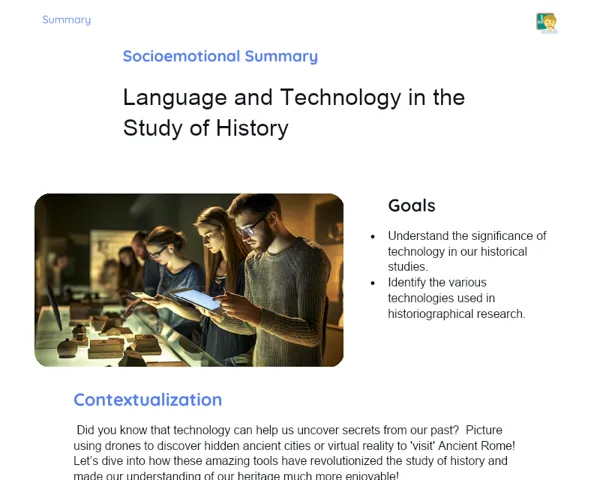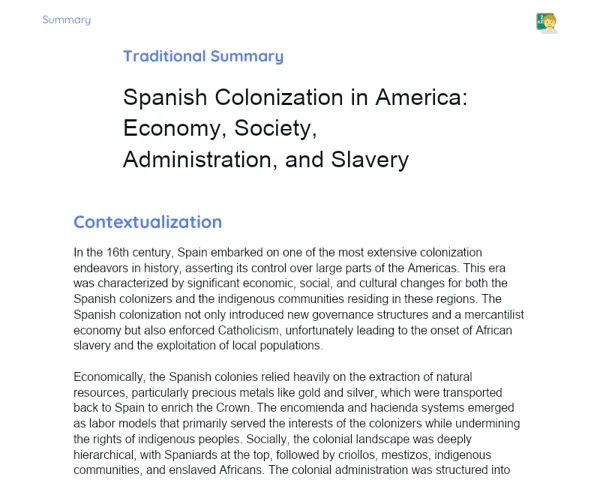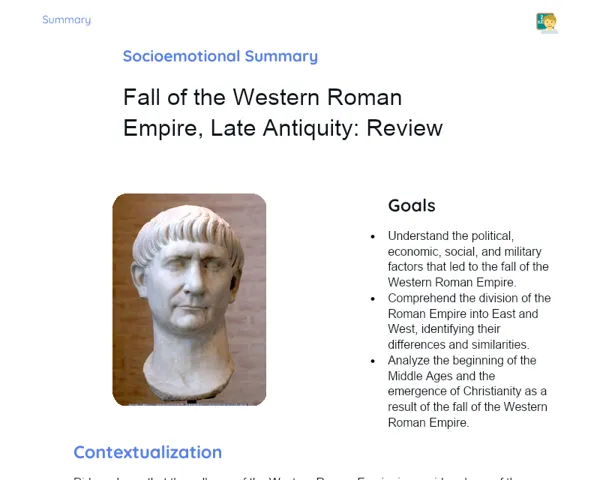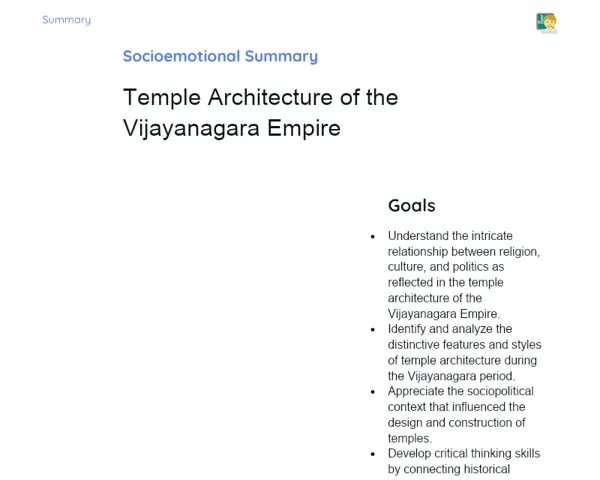Summary Tradisional | English Revolution: from the Puritan Revolution to the Glorious Revolution
Contextualization
To understand the English Revolution, we need to look at the period from 1640 to 1688, when England, Scotland, and Ireland experienced significant political and social shifts. This era encompasses the Puritan Revolution, the English Civil War, the Interregnum, and the Glorious Revolution. The Puritan Revolution (1640-1660) arose from tensions between Parliament and King Charles I, leading to the king's execution and the creation of a republic under Oliver Cromwell. Following Cromwell's death, there was a restoration of the monarchy in 1660 with Charles II. However, disputes between the king and Parliament persisted, culminating in the Glorious Revolution of 1688, which saw William of Orange take the throne and established a constitutional monarchy.
The Glorious Revolution is referred to as such because it happened with little bloodshed, symbolizing a peaceful transition of power. This event is often regarded as a pivotal moment in the development of modern democracy, as it resulted in the Bill of Rights of 1689, which limited the powers of the monarch and elevated Parliament's role. Moreover, the English Revolution had a direct influence on the drafting of the United States Declaration of Independence and the French Revolution, showcasing its enduring impact on global political history.
To Remember!
Puritan Revolution (1640-1660)
The Puritan Revolution was a conflict that unfolded between Parliament and King Charles I, driven by economic, religious, and political strains. Economic discontent stemmed from increased taxes and the king's financial policies, which frustrated the middle class and nobility. Religiously, tensions arose between Puritans advocating radical changes to the Anglican Church and traditional Anglicans. Politically, Charles I's attempt to rule without Parliament and his authoritarian approach was perceived as tyrannical and led to confrontations.
The conflict reached a climax with the execution of Charles I in 1649, marking a first in English history. This event ended the era of absolute monarchy and ushered in the Commonwealth, a republic led by Oliver Cromwell. Under Cromwell's leadership, England witnessed reforms aimed at strengthening parliamentary authority and Puritan religious practices.
Despite these reforms, Cromwell's rule faced pushback and internal strife. He assumed the title of Lord Protector, gaining nearly dictatorial powers, which garnered dissatisfaction from various societal sectors. Cromwell's passing in 1658 created a power vacuum, paving the way for the monarchy's restoration in 1660 with Charles II.
-
Conflict between Parliament and King Charles I.
-
Execution of Charles I and establishment of the Commonwealth.
-
Leadership of Oliver Cromwell and initiatives for Puritan reform.
English Civil War (1642-1651)
The English Civil War was an armed struggle between the Royalists, who backed King Charles I, and the Parliamentarians, who championed Parliament's supremacy. Key battles like the Battle of Marston Moor and the Battle of Naseby were crucial in shaping the outcome of the war. The Parliamentarians’ decisive victory at the Battle of Naseby in 1645 turned the tide against the Royalist forces.
The civil war further intensified social and regional divisions. The Royalists garnered backing from the nobility and Anglican clergy, while the Parliamentarians drew support from the middle class, Puritans, and various military factions. This conflict left deep scars on English society, causing widespread destruction, chaos, and a shift in the social and political landscape.
The war also had international ramifications, with Scotland and Ireland becoming embroiled in the conflict. Scotland initially allied with Parliament but later changed sides, complicating the alliances and rivalries that influenced the war's course. In Ireland, the violence and repression under Cromwell's command were especially severe.
-
Armed conflict between Royalists and Parliamentarians.
-
Significant battles: Marston Moor and Naseby.
-
Impact of the civil war on social and regional dynamics.
Interregnum (1649-1660)
The Interregnum was the time when England was without a monarch, being governed as a republic under Oliver Cromwell. Cromwell took on the title of Lord Protector and introduced various reforms, such as reorganizing the military and advocating for greater religious tolerance, although mainly excluding Catholics and monarchists. He also aimed to bolster England's international standing through military campaigns in Ireland and Scotland.
Domestically, Cromwell faced considerable challenges from factions wanting the monarchy restored or seeking increased democratization of government. His often authoritarian measures created discontent and political instability that lingered until his death.
On the international front, Cromwell's administration bolstered the English navy and positioned England advantageously in global trade. His military operations in Ireland and Scotland were marked by harsh treatment but helped cement English dominance in those regions. Cromwell's death in 1658 triggered a power vacuum, ultimately leading to Charles II’s return to the throne in 1660.
-
Republican governance under Oliver Cromwell.
-
Reforms and military expansions during his rule.
-
Political struggles and Cromwell’s subsequent death.
Glorious Revolution (1688)
The Glorious Revolution was characterized by the peaceful ousting of King James II and the ascension of William of Orange to the English throne. This marked a crucial shift towards a constitutional monarchy, where the monarch's power was curtailed, and Parliament assumed a central governing role. It is described as 'glorious' due to its lack of significant bloodshed, setting it apart from other violent uprisings.
William of Orange’s claim to the throne was ratified by the Bill of Rights of 1689, which laid down the foundation for constitutional governance. This essential document restricted the king’s powers, confirmed Parliament's superiority, and established fundamental rights like freedom of speech and the prohibition of cruel punishments. The Bill of Rights of 1689 is seen as a cornerstone in the journey towards modern democracy.
The Glorious Revolution left a profound legacy on British and global politics. It influenced the drafting of the United States Declaration of Independence and the French Revolution, showcasing its far-reaching effects. Additionally, it established vital precedents regarding the relationship between rulers and their subjects, propelling the notion that power should be exercised with the consent of the people.
-
Peaceful transition of power from James II to William of Orange.
-
Introduction of the Bill of Rights of 1689.
-
Enduring influence on British and international political landscapes.
Key Terms
-
English Revolution: A period of significant political and social transformations in England from 1640 to 1688.
-
Puritan Revolution: The conflict that arose between Parliament and King Charles I, culminating in the king's execution and the establishment of the Commonwealth.
-
English Civil War: Armed conflict between Royalists and Parliamentarians, featuring pivotal battles such as Marston Moor and Naseby.
-
Interregnum: The era when England functioned as a republic under Oliver Cromwell’s leadership.
-
Restoration: The reinstatement of the monarchy with Charles II in 1660 after Cromwell's demise.
-
Glorious Revolution: A peaceful power transfer resulting in William of Orange's ascension and the establishment of a constitutional monarchy.
-
Bill of Rights of 1689: A document that curbed the monarch's powers and affirmed Parliament's authority.
-
Constitutional Monarchy: A system where the monarch's authority is limited by laws and Parliament.
-
Oliver Cromwell: The military and political figure who governed England as Lord Protector during the Interregnum.
-
Charles I: The King of England whose attempts to govern without Parliament led to the Puritan Revolution and his execution.
-
Charles II: The monarch restored to power in 1660 following the Interregnum, continuing to face friction with Parliament.
-
William of Orange: The leader who ascended to the throne during the Glorious Revolution, establishing a constitutional monarchy.
Important Conclusions
The English Revolution, spanning from 1640 to 1688, was a significant era of political and social upheaval that saw the transition from absolute monarchy to constitutional monarchy. Key events like the Puritan Revolution, the English Civil War, the Interregnum, and the Glorious Revolution illustrate the conflicts between Parliament and the Crown and the profound changes in England's power dynamics.
The execution of King Charles I and Cromwell's republican governance during the Interregnum highlight the political, religious, and social complexities of the time. Following Cromwell’s passing, the restoration of the monarchy with Charles II showcased the persistence of conflicts between Parliament and the Crown, which were ultimately resolved through the Glorious Revolution and the establishment of a constitutional monarchy under William of Orange.
The Bill of Rights of 1689 marked an essential achievement in limiting the monarch's reach and affirming Parliament's supremacy. These transformative events have had a lasting effect on modern democratic principles and have inspired subsequent revolutions, including the American and French Revolutions. Grasping the essence of the English Revolution is vital for comprehending the roots of contemporary governance and the evolving relationship between rulers and the populace.
Study Tips
-
Revisit the core events of the English Revolution and their consequences, emphasizing the causes and effects of the civil wars and shifts in government.
-
Examine the Bill of Rights of 1689 and discern how it curtailed the monarch's powers and laid the groundwork for constitutional governance.
-
Draw comparisons between the English Revolution and other significant revolutions, such as the American and French revolutions, identifying both similarities and distinctions in their processes and outcomes.



